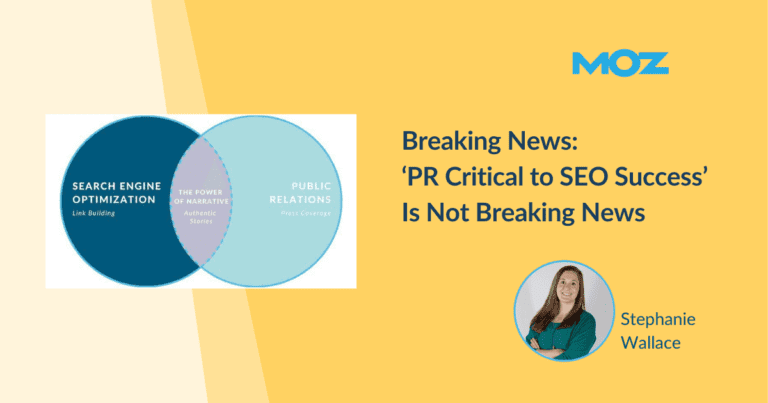1. Choose the right story
To be successful in using a PR approach to SEO, we need to change our approach to optimizing for consumer discovery all channels. Social is included.
It’s not about being everywhere at once. It’s about being in the right place, at the right time, in the right way, and solving the right problem. Even if this “part” or “solution” is not considered part of traditional SEO. We can approach content through the lens of optimizing for discovery, regardless of channel or platform.
To ensure our content aligns with the goal, ask:
-
What is the right story and message for that particular outlet?
-
How is my audience different for this channel?
-
How will this experience come to life?
-
How will this experience differ from channel to channel?
-
How can we optimize for each individual channel?
2. Create custom content
In addition to tailoring messaging for each channel, we need to adapt the format and style of our content to align with the specific characteristics and expectations of each platform. A longform narrative may work great for specific opportunities, but may not be repostable on other social platforms like X or YouTube.
Creating custom content for each channel’s unique needs not only demonstrates a nuanced understanding of each store’s characteristics but also of your target audience.
Consider what kind of content performs well on each channel and the specific requirements for each channel (eg character limits, video length, etc.). People consume content and media differently on the web and we need to recognize that. There is no one-size-fits-all solution.
Create tailored content across all channels to improve engagement:
-
Adjust content length and format: Adjust the length and format of your content based on the platform. Social channels may require concise messages, while guest posts or platforms like LinkedIn can accommodate longer content. You may also need to use different types of content, such as videos, infographics or images.
-
Using appropriate visual elements: Customize visuals to fit the platform. Instagram and Pinterest, for example, are highly visual and require eye-catching images, while LinkedIn may ask for professional graphics or infographics.
-
Adding value and infusing character: Elevate your business into a brand with insights and opinions unique to you. Invite your audience to contribute to the conversation by asking for answers, comments and feedback. Prioritize encouraging audience engagement in a platform-appropriate way.
3. Optimize accordingly
Effective communication depends on choosing the right channel for our message, and often, this extends beyond traditional search. The very definition of search has changed. TikTok and Instagram are some of the biggest search engines after Google. Consumers use Amazon as a one-stop shop and YouTube as a university. The ebb and flow of social platforms is enough to make your head spin. People no longer consume media passively. they actively seek what they want.
PR specialists excel at identifying the most appropriate platforms or outlets to connect with their target audience. SEO professionals can take advantage of these strategies to ensure that our content also reaches the right people at the right time. We need to be where our target audience is, cultivating engagement at every touchpoint rather than over-indexing at the bottom of the funnel.
Think outside of the typical SEO principles to boost your Brand AuthorityTM and reliability across all channels:
-
Traditional PR: Public relations efforts such as press releases, guest contributions, and expert interviews can drive mentions and links to authoritative websites, increasing a brand’s credibility in various industries. Use thought leaders in the space and make sure links and social promotions are included as part of every partnership.
-
Social promotion: Think beyond a typical press release or industry directory. How does this story translate to social media specifically? We can optimize your social media posts for the unique ranking factors of each different social platform. It is widely accepted that social links do not directly affect SEO ranking. However, actively sharing content on social media reinforces brand power (more on that!), social proof, and promotes a brand’s position as an industry authority.
-
Influencer Partnerships: Like traditional social promotion, the right influencer collaboration can increase brand awareness and create a sense of trust. Identify stories that can be leveraged through relevant influencers in your industry. What are the demographics of your potential influencer’s audience? What calls to action might make sense? More importantly, is influencer marketing worth investing in?
-
Newsjacking: This tactic of producing content that capitalizes on trending topics or breaking news can be difficult, but the results are worth it. By keeping a pulse on the news, you can determine if there are relevant trending stories that tie into your defined brand stories. This can support SEO by reaching a wider audience, leading to valuable links and credibility. However, this tactic relies on the ability to produce timely expert opinions and high-quality content. For newsjacking to be truly successful, a thorough understanding of breaking information and the ability to quickly circulate powerful content is required.

